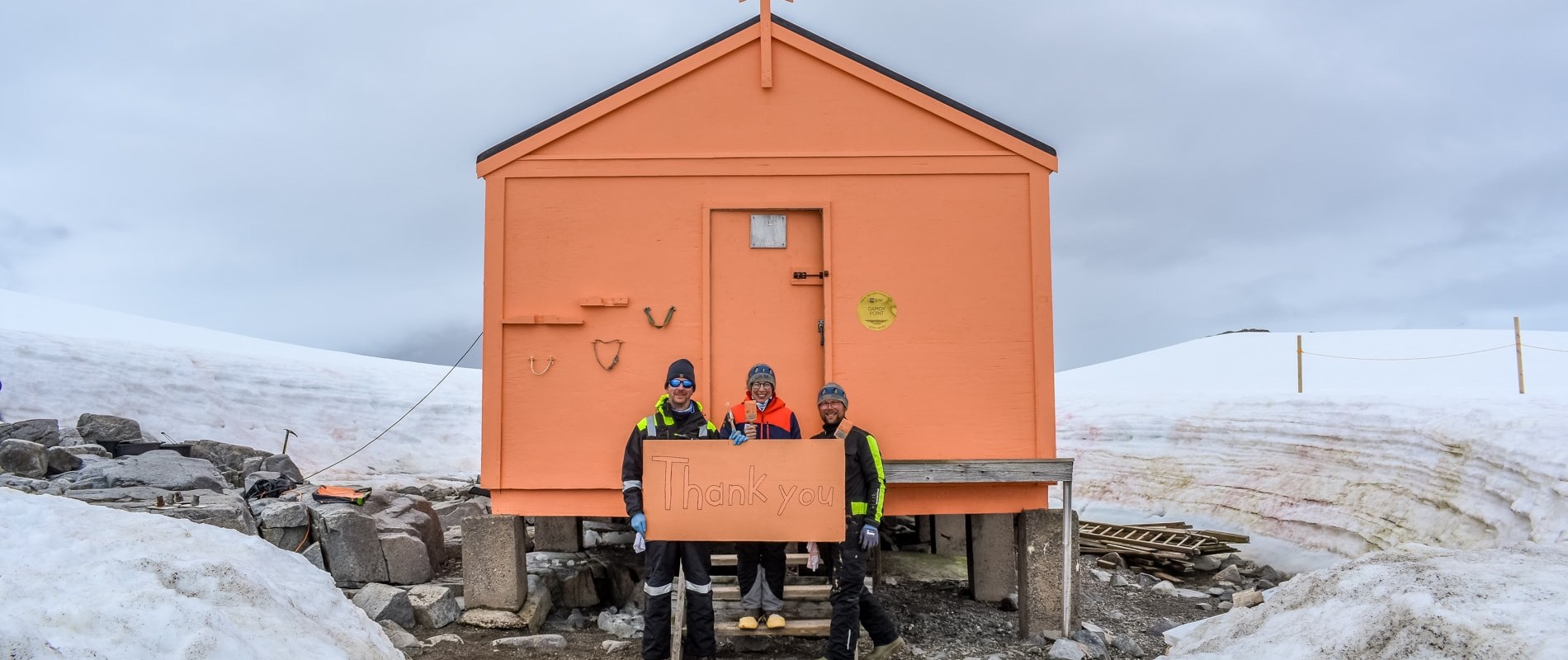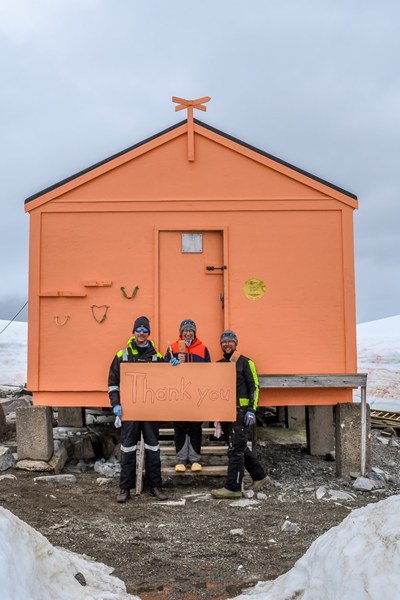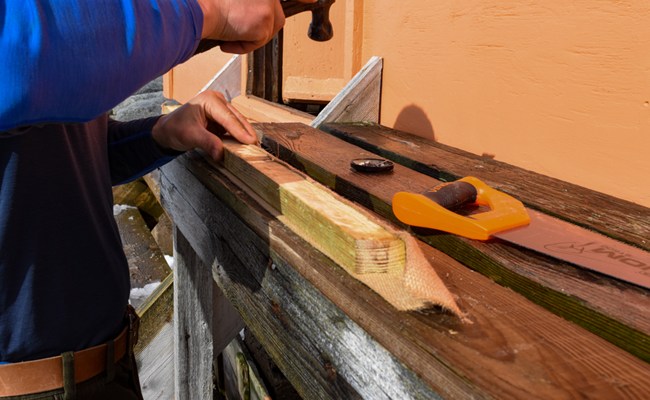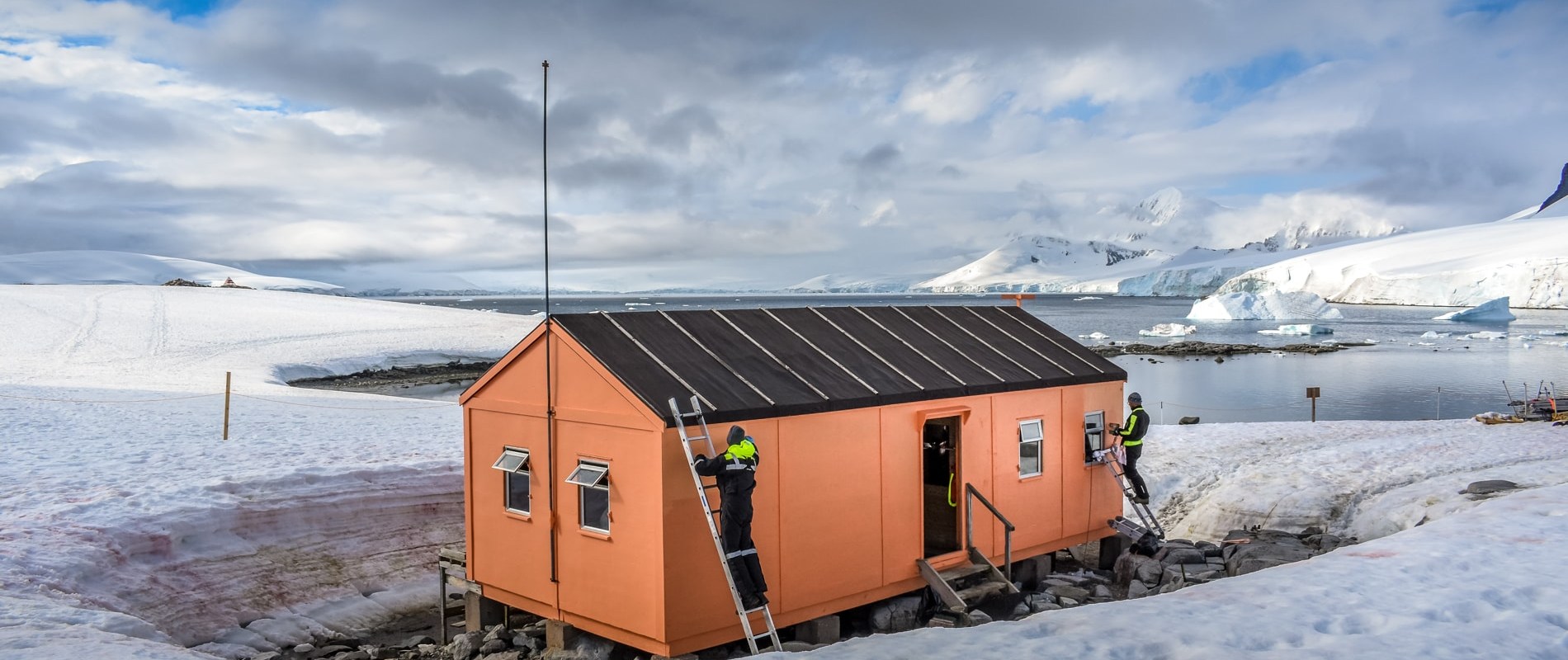
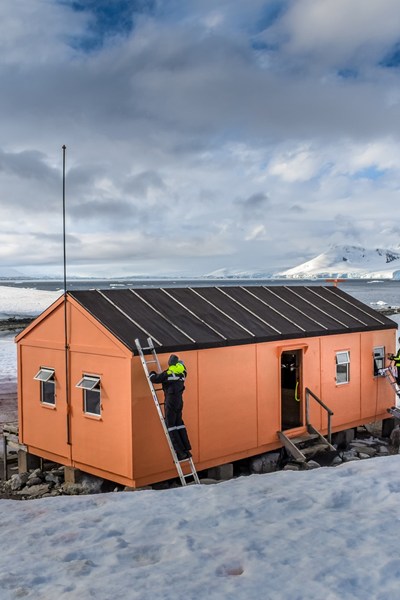
DAMOY
DAMOY HUT AT DORIAN BAY A BRIEF HISTORY
A special place listed as Historic Site and Monument no. 84, the Damoy Hut site is Antarctica’s only protected historic transit facility and skiway, providing shelter and safe passage for scientists.
Impressive site
On a rocky outcrop surrounded by penguins and calving glaciers is a small wooden hut known fondly by some as “the world’s most southerly waiting room”. When the RRS John Biscoe arrived in 1975 to establish the base, Dorian Bay was chosen for its cargo storage area and skidoo-friendly terrain. On 5 November, the prefabricated plywood insulated sheets were unloaded. By 14 November the band of amateur builders had built Damoy for shelter. For many, this was where they made their first Antarctic landing by ship. “As a first landfall in Antarctica it was hard to beat,” enthuses Steve Garrett, geophysicist. “Surely a candidate for the most beautiful place on Earth.”
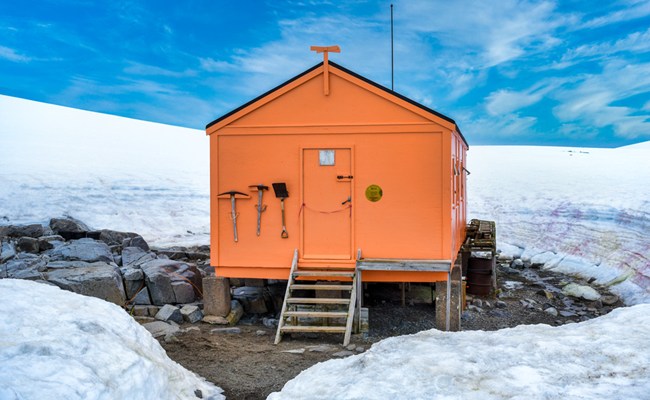
Waiting time
Tired of counting penguins, the ever-resourceful Damoy dwellers allayed the boredom by playing games, reading, writing letters and poetry, carving whalebone, art and listening to the BBC World Service. Damoy provided an acclimatising gateway between ship and station allowing skills, both practical and social, to be mastered.

Life at Damoy
The hut did not disappoint with its array of canned ingredients. Wireless operator Andrew Denley recalls dining off “tinned bacon, tinned sausages, dried egg and baked beans all washed down with black coffee and tinned bananas for pudding!” The hut inhabitants baked cakes and shortbread in a biscuit tin on the Primus stove. The men slept in the bunkroom in five sets of three storey wooden bunkbeds.
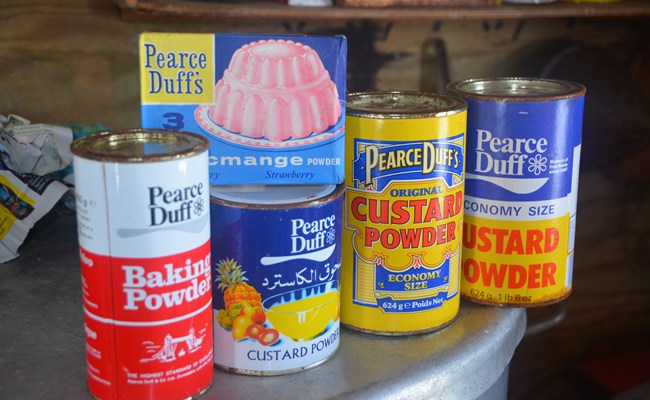
Taking to the air
Damoy was a place of limbo, where men waited at the mercy of the Antarctic weather for a ‘sched’ radio call with Rothera with positive news of the arrival of the Twin Otter aircraft. BAS pilot Garry Studd describes Damoy Point skiway as “a challenging place for a new Antarctic pilot to find his wings.” Flights could also be eventful for the passengers, “We descended off the ridge towards the ice cliffs. Thankfully at the last moment the pilot got the plane to lift almost kissing the sea as we curled into the air,” base general assistant Nick Cox remembers.
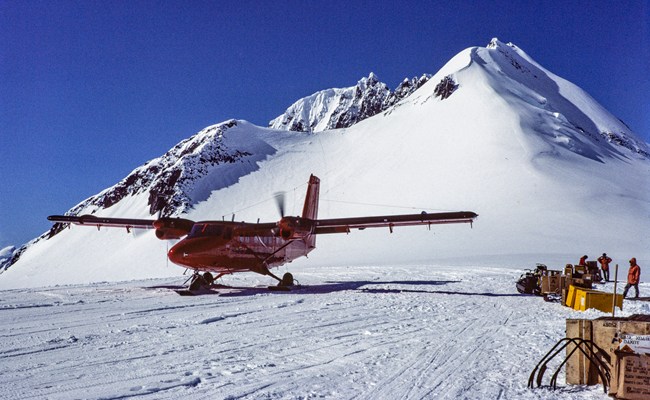
Historic site
The hut became redundant in 1993 and by 2007 the building was due for demolition. However, it was saved and preserved as “an excellent example of Antarctic logistics and early air operations in Antarctica” helping us to understand the operational challenges of working in Antarctica. It takes its place as Historic Site and Monument No. 84 – one of only 33 buildings, and the sole transit facility, on the continent protected by the Antarctic Treaty.
The site today
Under the care of UKAHT since 2009, today the modest hut is visited by more than 14,000 tourists each season. They look around rooms frozen in time containing everyday paraphernalia as if the men had just left on the last flight, take a walk up the slope to the airstrip location with views down to Port Lockroy and meet the local penguins.
Conservation at Damoy Orange is the new blue
In 2023, we restored the hut back to its original bright orange. The decision followed paint sampling by our conservation team in 2018 and research by paint scientist and conservator, Phillipa McDonnell, in 2019. The restoration of the original colour scheme improved the legibility of the hut’s historic function as a transit centre and provides a key hook for the improved interpretation of the site as a whole as well as protecting it from the elements.
The work was undertaken by a small field team of one field guide and two conservation carpenters experienced in conserving historic buildings. They spent nearly four weeks on-site from mid-January, working around challenging weather to strip back the existing paint by hand, prime, and repaint the building to its original bright orange. As with any UKAHT conservation work, the team adhered to strict methodologies to ensure no contamination of the surrounding environment.
